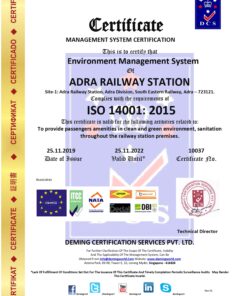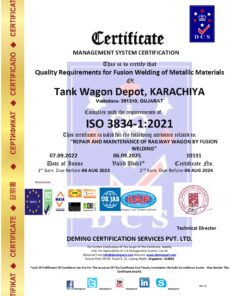Sale!
ISO 10015 Quality Management Guidelines for Training
Original price was: ₹20,000.00.₹14,990.00Current price is: ₹14,990.00.
ISO 10015 Quality Management Guidelines for Training
ISO 10015 is a standard that provides guidelines for training within an organization’s quality management system (QMS). It aims to ensure that training activities are effective, meet the needs of the organization and its employees, and contribute to achieving the organization’s quality objectives. Here’s an overview of the key elements and guidelines provided by ISO 10015:
1. **Scope**: The standard applies to all types of organizations regardless of size, industry, or sector. It covers both internal and external training activities.
2. **Training Needs Analysis**: Organizations should identify and analyze the training needs of employees to ensure that training programs are relevant and address skill gaps.
3. **Design and Development of Training Programs**: Training programs should be designed based on the identified needs and objectives. This includes defining learning outcomes, selecting appropriate training methods and materials, and developing training content.
4. **Implementation of Training**: The standard emphasizes the importance of effective implementation of training programs. This involves selecting qualified trainers, providing necessary resources, and ensuring that training is delivered as planned.
5. **Evaluation of Training**: Organizations should evaluate the effectiveness of training programs to ensure that they meet the intended objectives. This can be done through various methods such as feedback from participants, assessment of learning outcomes, and monitoring performance improvement.
6. **Review and Improvement**: Continuous improvement is a key principle of ISO 10015. Organizations should regularly review their training activities and make necessary improvements to enhance effectiveness and efficiency.
7. **Documentation**: Proper documentation of training activities, including objectives, content, methods, and evaluation results, is essential to ensure transparency and accountability.
8. **Competence of Trainers**: Trainers should possess the necessary knowledge, skills, and experience to effectively deliver training programs. Organizations should establish criteria for selecting and evaluating trainers.
9. **Feedback and Communication**: Establishing channels for feedback and communication between trainers, trainees, and management can help identify areas for improvement and ensure that training needs are effectively addressed.
10. **Integration with Quality Management System**: Training should be integrated into the organization’s overall QMS to ensure alignment with quality objectives and continuous improvement efforts.
By following the guidelines provided by ISO 10015, organizations can develop and implement effective training programs that contribute to improving employee competence, enhancing performance, and achieving organizational goals. Implementing these guidelines can also help organizations demonstrate their commitment to quality and continuous improvement to stakeholders and customers.












Reviews
There are no reviews yet.